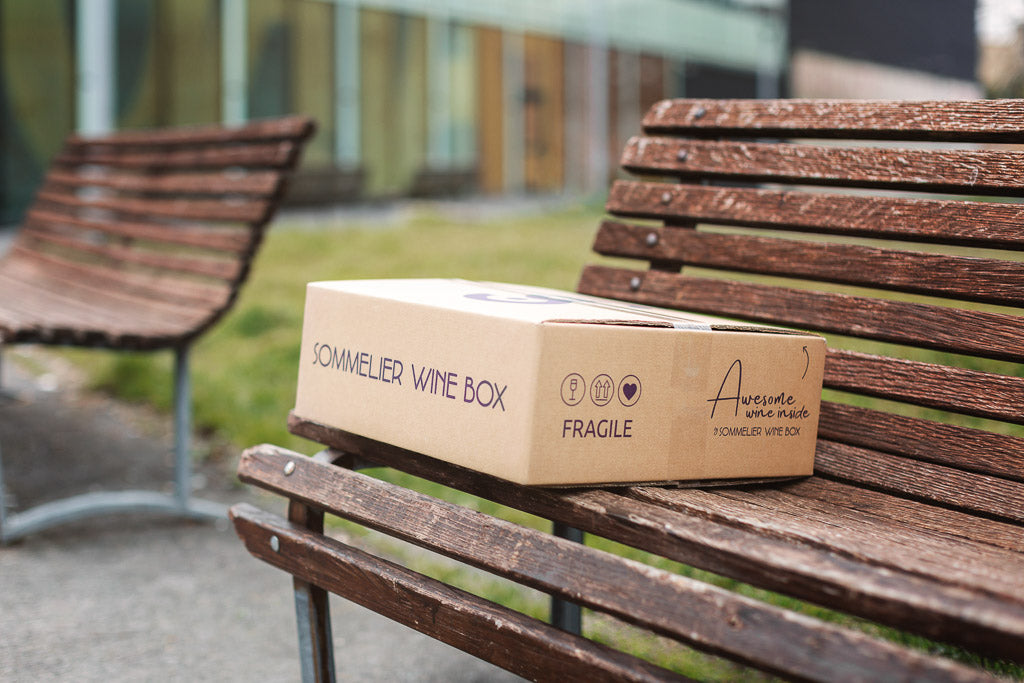Is it difficult to blindly recognize the most popular wine in the world? No, not even for those who are less experienced: you just need to know its characteristics, which are not many and are precise. Let's see together how to guess that there is a Chardonnay in the glass in a single sip.
How to recognize Chardonnay? Let's see together the tricks for guessing one of the most famous wines in the world in the still version at the first sip.
Before leaving: we at Sommelier Wine Box adopt this rule to distinguish the grape variety from the wine of the same name: the grape in lower case, the wine in capital letters. Let's begin!
Where does the Chardonnay grape come from?
It is an indigenous vine from Burgundy , which has spread throughout the world since the end of the nineteenth century and today is in all respects an international grape. In fact, the vine has an excellent ability to adapt to different environments and different winemaking techniques.
Specificities of Burgundy Chardonnay?
The most prestigious Chardonnays in the world are produced in Burgundy. Tasting a Chardonnay from the Côte de Beaune is one of the most fascinating experiences for those who love great wine because here the grape variety expresses itself in a unique way and is vinified with a wisdom that reaches unparalleled heights of excellence.
- Read also: why Burgundy wine is so special
What wines are made from Chardonnay?
Complex white wines, with long refinements , including in wood, fresher whites, wonderful Champagnes and sparkling wines in general.
The aromas of Chardonnay grapes: how are they developed by the wine?
The Chardonnay grape imprints clear and precise varietal characters in the wine, even if the grapes are odorless. When the grapes are still must, only the herbaceous notes, typical of all musts, can be felt. It is only during alcoholic fermentation that the wine takes on its typical characteristics. The molecule that more than others determines the aromas of Chardonnay is β-damascenone (present in many wines but in Chardonnay present in high concentrations).
Finally, the olfactory characteristics of Chardonnay depend a lot on where the grapes are produced and how the wine is vinified.
How to recognize Chardonnay?
👁 The color is straw yellow.
👃🏻 For perfumes, there are two large families of aromas in Chardonnay: fruit and spices . We distinguish three cases:
- Chardonnays produced in cold areas or harvested a little before complete maturation express above all aromas of white pulp fruit (green apple, pear, banana, peach) and citrus notes of lemon and grapefruit.
- Chardonnays made in warm areas or from grapes harvested at full ripeness develop bouquets dominated by the fruit , therefore notes of apricot, ripe yellow peach, exotic fruit such as litchi, citrus aromas (lemon peels), floral aromas (broom, acacia flowers ) and honey .
- Chardonnays that are aged in small wooden barrels (the legendary barriques , as per tradition in Burgundy, which generally leads to malolactic fermentation) develop very complex and enveloping aromas, with spicy notes including cinnamon, woody , roasted coffee, sweet notes of chocolate, hints of dried fruit or jam (apricot, almonds, hazelnuts), candied citrus fruits, toasted bread, vanilla, butter, honey, caramel, lime.
👄 In the mouth, as before, the degree of ripeness of the grapes and refinement makes a difference.
- If the grapes were harvested before complete maturation or grown at altitude, the fresh notes and a more drinkable flavor prevail. Then it is a rather soft, savory, persistent wine. A true champion.
- In the case of Chardonnay harvested at full maturity or aged in barrique the structure is superior.
Clues to recognize a great Chardonnay from Burgundy
The key aromas to recognize the Chardonnay of the great Burgundy appellations blindly are sweet in nature, due to a winemaking style that loves long refinements even for white wines. In particular, an important Burgundy Chardonnay is recognized by the aromas of peanuts , caramelized hazelnuts , chocolate pralines , cotton candy , together with herbaceous and woody notes that are always very delicate such as straw smoke.
Tips for tasting Chardonnay
If you uncork a Chardonnay that has undergone long aging or in any case with a certain number of years behind it , open it 15 minutes beforehand .
Serve it at 10° C (12° C for the more structured ones, which have aged in wood).
A summer tip : sip it together with fruit salad brushed with just a little water, a drop of lemon, a spoonful of honey and a dash of Chardonnay.
A meditative tip : taste it alone , in small sips, reading a poem by Baudelaire.
Or invite friends, make a fish tartare and enjoy one of life's greatest pleasures!



